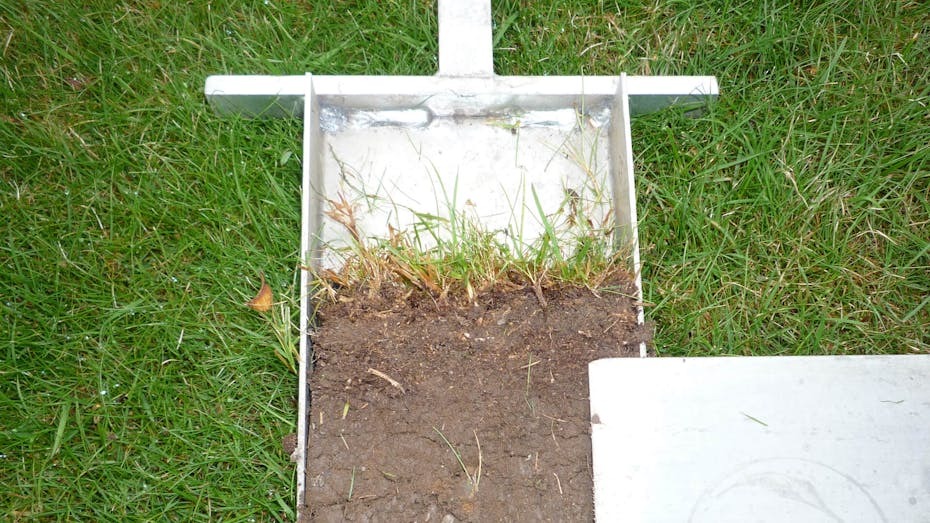
Checking for Thatch
If your lawn has straw coloured grass or is soft and springy it might need scarifying or de-thatching. Here is how to check
Before you start scarifying and de-thatching your lawn make sure the problem IS thatch!
In addition, raking or scarifying your lawn without good reason or at the wrong time can harm your lawn. I’ve met enough lawn owners to know that some have a mind-set that on the dot of March 1st out comes the scarifier, regardless of whether or not thatch exists! Therefore, check first and scarify only if needed.
Brown grass
Just because you see some brown grass in your lawn doesn’t automatically mean it’s thatch. It could be the result of a dry summer when a light raking will clear out the dead brown grass. It could also be the effects of disease, particularly red thread which kills just the leaves of the grass (not the plant) leaving behind a lot of patchy dead brown grass. Raking or scarifying when disease is about can possibly spread the disease and weaken the grass, turning a mild infestation into a disaster!
Spongy lawn
Your lawn may also feel spongy but this does not necessarily mean thatch. Give a small area of your lawn a light rake; then get down on your hands and knees and have a close look. You may find lots of moss that wasn’t previously visible has been exposed. You can now make plans to use your lawn raker in spring or autumn as part of a moss control programme.
You may also find that a test raking will lift up the grass and once ‘stood up’ you’ll find it’s an awful lot longer than you first thought!
This ‘stood up’ long grass has been previously packed down by the repeated rolling by a mower with a roller. The roller lays the grass down forming the ‘lawn stripe’ but over time it can pack the grass excessively forming a spongy bed. The best way to resolve this is to lightly rake the lawn then mow it immediately afterwards. You may need to do this several times which will cause your lawn to become quite brown as you’ll have removed most of the grass leaves and be left with yellowy brown stems. It will soon recover but like all invasive lawn treatments only do this in good growing conditions. Prevent this happening in the future by changing mowing direction at least every few cuts.
Take samples
Finally you need to take a small sample of lawn and have a look at it. Use a bulb planter or your garden spade or trowel to take a few samples from various places around your lawn. You don’t need a big piece, anything from half an inch across but at least 2” deep. The layer between the grass and the soil is the thatch layer. It is compressible and fibrous. Anything over a quarter inch means you need to scarify your lawn.
If the thatch problem is so bad that the grass has rooted into it then you will lose most of your lawn if you use the scarifier. If you want an easier option but not as quick then you should hollow tine the lawn spring and autumn for a few years AND smash the cores over the lawn. The hollow tines or corers will cut out some thatch, the resulting hole will allow water and nutrients back into the soil; the grass will start rooting into the soil again and the redistributed soil from the cores will increase the rate of thatch decay. It does work as long as you don’t have deep compaction. If this is the case it is the compaction that is causing the thatch and you’ll never get rid of it whilst the compaction remains. Time to renovate and start afresh I’m afraid!